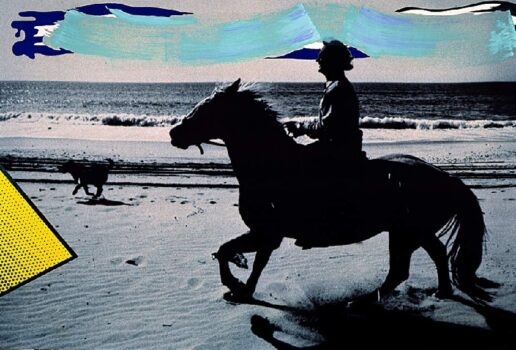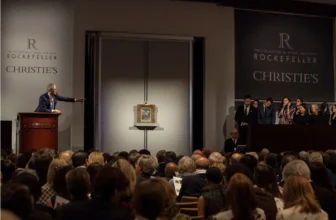The Comic Book Genius Who Changed the Art World Forever
When we think of the revolutionary voices in 20th-century art, one name consistently pops into conversation, Roy Lichtenstein. With his bold, comic book-inspired visuals, iconic use of Ben-Day dots, and sharp commentary on consumer culture, Lichtenstein didn’t just make art, he redefined it. Though often overshadowed in popular discourse by his Pop Art contemporary Andy Warhol, Lichtenstein’s genius was both distinct and transformative.
In a world teetering between tradition and innovation, Roy Lichtenstein stood as a bridge. He challenged the boundaries of what could be considered art. But what made him a true genius? How did he impact the global art landscape? And why, decades after his death, does his influence remain so potent?
Let’s dive deep into the extraordinary story of Roy Lichtenstein, his genius, his techniques, and his legacy.
Early Life and the Making of an Artist
Roy Fox Lichtenstein was born on October 27, 1923, in New York City, into an upper-middle-class family. From an early age, Lichtenstein showed an interest in art, often sketching and experimenting with visual forms. Despite his artistic inclinations, Lichtenstein’s path to fame wasn’t immediate. He studied at Ohio State University, where his education was interrupted by World War II. He served in the U.S. Army and returned to complete his studies, eventually earning a Master of Fine Arts degree.
During the 1940s and 1950s, Lichtenstein’s style was still evolving. He experimented with Cubism, Abstract Expressionism, and even traditional American themes. But it wasn’t until the early 1960s that he struck artistic gold by looking at one of the least-respected mediums in the art world, comic books.
Why Is Roy Lichtenstein a Genius?
Calling Roy Lichtenstein a genius isn’t just a nod to his technical skill, it’s a recognition of his ability to see meaning in what others dismissed.
In a time when Abstract Expressionism reigned supreme and emotional, chaotic brushstrokes were considered high art, Lichtenstein dared to ask: What if mass culture was worthy of the same reverence? By taking images from comic books and advertisements and enlarging them to monumental sizes, Lichtenstein transformed the banal into the profound.
The Genius Behind the Dots
Lichtenstein’s genius lay in his ironic detachment. He wasn’t just copying comic books, he was commenting on them. His use of Ben-Day dots, a printing technique used in comic strips to create shading with tiny dots, was both a celebration and critique of mass production. He meticulously hand-painted these dots, replicating the mechanical process with painstaking detail.
In doing so, Lichtenstein blurred the line between “high” and “low” art, challenging traditional art world elitism. His work wasn’t just visually arresting, it was conceptually daring.
How Did Roy Lichtenstein Impact the World?
Roy Lichtenstein’s impact is far-reaching, spanning visual culture, modern art history, and even philosophy.
1. Redefining Art Itself
Lichtenstein’s art forced critics, curators, and viewers to reassess what could be considered art. His paintings, larger-than-life reproductions of comic book panels, posed provocative questions: Is originality necessary for art? Can something mass-produced still be meaningful?
By challenging the concept of originality, Lichtenstein set the stage for postmodernism in art, which often revels in irony, pastiche, and repetition.
2. Globalizing American Culture
As one of the central figures of the Pop Art movement, Lichtenstein helped export American pop culture to the rest of the world. His work was uniquely American, rooted in comic books, advertising, and post-war consumerism, and yet it found resonance globally. In Europe and Asia, he became a symbol of America’s cultural landscape in the 1960s.
3. Inspiring New Generations
From graphic design and advertising to fashion and digital media, Lichtenstein’s aesthetic continues to inspire. Brands like Supreme and artists like Takashi Murakami have drawn from his Pop Art legacy. Even emoji culture and meme aesthetics owe a debt to Lichtenstein’s visual shorthand and irony.
What Art Techniques Did Roy Lichtenstein Use?
Lichtenstein’s art may look mechanical at first glance, but his techniques were complex and deliberate.
1. Ben-Day Dots
The signature element of Lichtenstein’s art, Ben-Day dots, originated in the printing industry. Lichtenstein hand-painted these dots using stencils and brushes, carefully aligning them to mimic the printed look. These dots served not just as a stylistic choice but as a commentary on industrialization and mechanized beauty.
2. Comic Book Imagery
Lichtenstein borrowed directly from comic book panels, but he wasn’t merely copying. He transformed them by altering colors, reconfiguring compositions, and removing context to isolate and elevate visual drama.
3. Bold Primary Colors
Lichtenstein’s color palette typically featured red, yellow, blue, and black, the same basic colors used in commercial printing. This restricted palette helped emphasize his commentary on mass media.
4. Heavy Outlines
Like comics, Lichtenstein used thick black outlines to emphasize form. These lines gave his work a graphic quality, making it instantly recognizable and striking from a distance.
5. Industrial-Scale Canvases
Lichtenstein scaled up small, disposable comic images into museum-sized canvases, thereby forcing viewers to confront images they would normally overlook.
Fascinating Facts About Roy Lichtenstein
His Breakthrough Came From a Dare
In 1961, Lichtenstein’s young son challenged him to paint something “as good as” Mickey Mouse. The result? His breakthrough piece: Look Mickey, which launched his Pop Art career.He Was Not Universally Loved at First
Critics initially dismissed his work as plagiarism or anti-art. Comic book artists, too, often resented him for making millions off imagery they created for pennies. Over time, however, even many critics came to recognize the depth of his conceptual approach.He Was a Perfectionist
Despite his mechanical-looking style, Lichtenstein labored over every dot and line. His studio was run like a design lab, precise, orderly, and filled with tools like projectors, stencils, and custom brushes.He Didn’t Just Do Comics
Lichtenstein also parodied famous art styles, from Monet’s Impressionism to Picasso’s Cubism, reinterpreting them through his dotted, Pop lens.He Was a Teacher
Lichtenstein taught art at several institutions, including Rutgers University, influencing a new generation of artists with his philosophy and style.
What Is Roy Lichtenstein’s Most Expensive Painting?
The most expensive Roy Lichtenstein painting ever sold at auction is “Masterpiece” (1962). This iconic work sold privately in 2017 for $165 million, making it one of the most valuable works of art ever sold.
“Masterpiece” features one of Lichtenstein’s classic blond heroines saying, “Why, Brad darling, this painting is a masterpiece!” The work is a meta-commentary on fame and self-awareness in art. Its massive valuation reflects not only its artistic merit but also Lichtenstein’s unparalleled influence on modern culture.
Is Roy Lichtenstein the Father of Pop Art?
Roy Lichtenstein is certainly one of the founding fathers of Pop Art, but he wasn’t alone. Alongside Andy Warhol, James Rosenquist, and Claes Oldenburg, Lichtenstein helped forge a movement that took consumer culture, advertising, and mass media as its subject.
However, what sets Lichtenstein apart is his pioneering use of comics as fine art, a first in the art world. While Warhol gravitated toward celebrity culture and consumer products like Campbell’s soup cans, Lichtenstein tackled visual storytelling, emotion, and media manipulation through his comic-inspired works.
In many ways, Lichtenstein is the father of comic-based fine art, and certainly one of the architects of Pop Art’s intellectual foundation.
More Than Just Dots and Comics
Roy Lichtenstein passed away in 1997, but his legacy endures in museums, galleries, and visual culture across the globe. His work is part of permanent collections in institutions like the Museum of Modern Art (MoMA), the Tate Modern, and the Art Institute of Chicago.
Today, Lichtenstein’s art continues to provoke thought, delight audiences, and shape the way we interpret images. He proved that intellectualism and pop culture aren’t mutually exclusive, and that sometimes the most profound ideas come from the most unexpected places.
In a culture saturated with media, advertising, and spectacle, Roy Lichtenstein remains an enduring voice, playful, provocative, and profoundly genius.
So why is Roy Lichtenstein a genius?
Because he saw art where others saw trash. He turned pulp into poetry. He held a mirror to society’s obsession with media and made us laugh, and then think.
His impact is vast, his style is timeless, and his message is more relevant than ever: in a world of copies, commentary is creativity.
Roy Lichtenstein didn’t just paint pictures. He painted ideas. And for that, he’ll forever be a masterpiece. image/lichtensteincatalogue.org/gianfrancogorgoni.com




